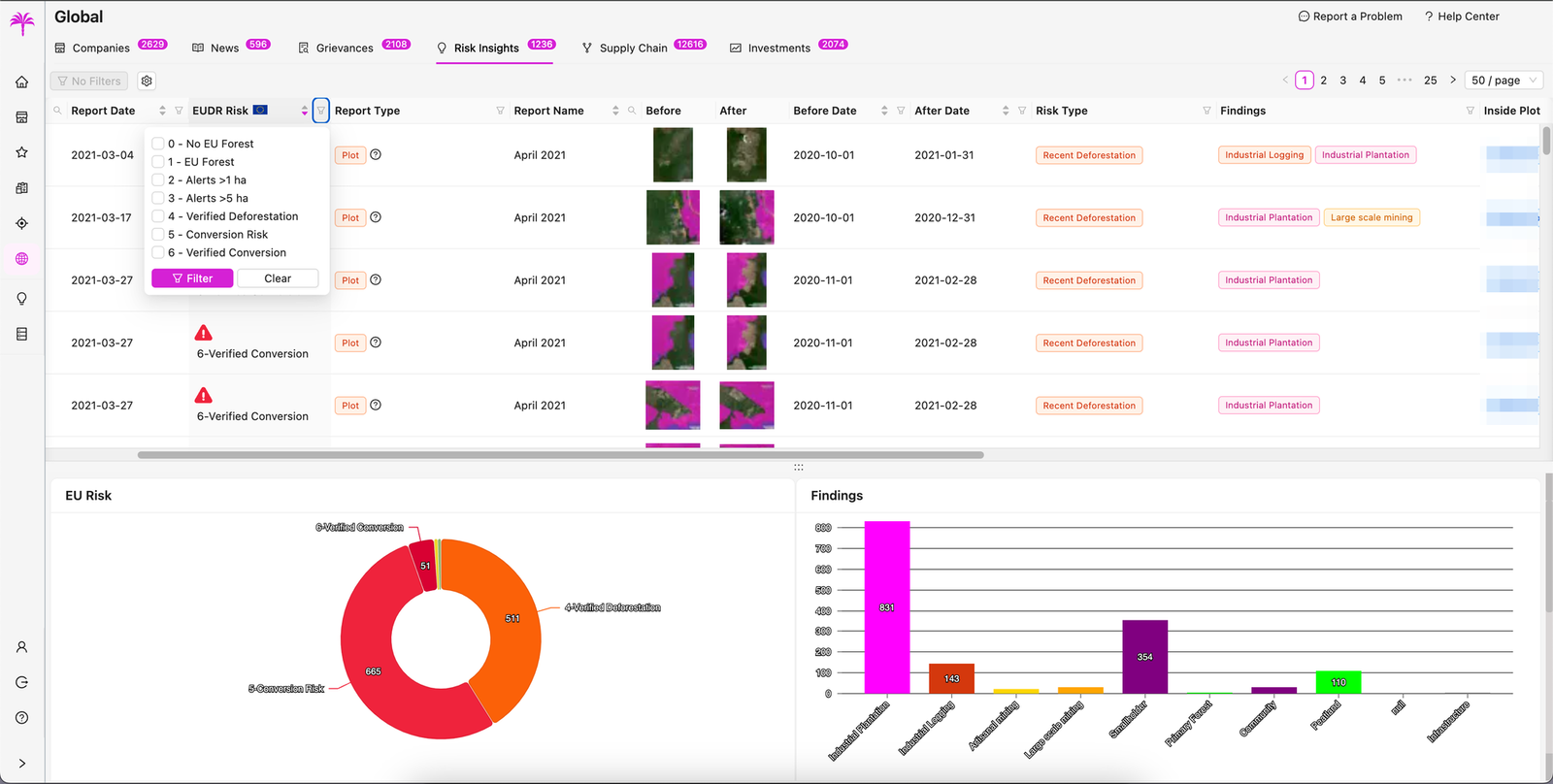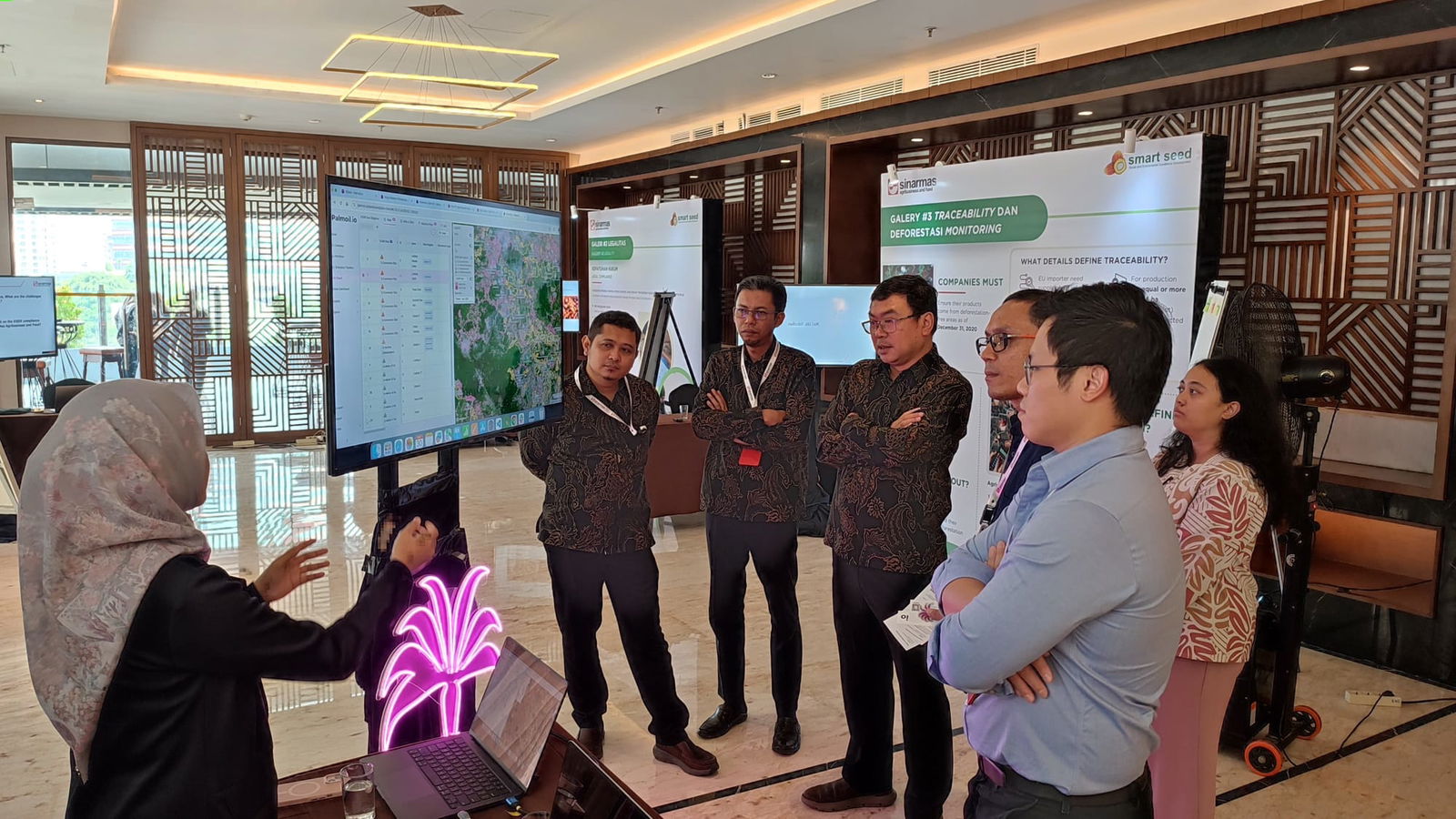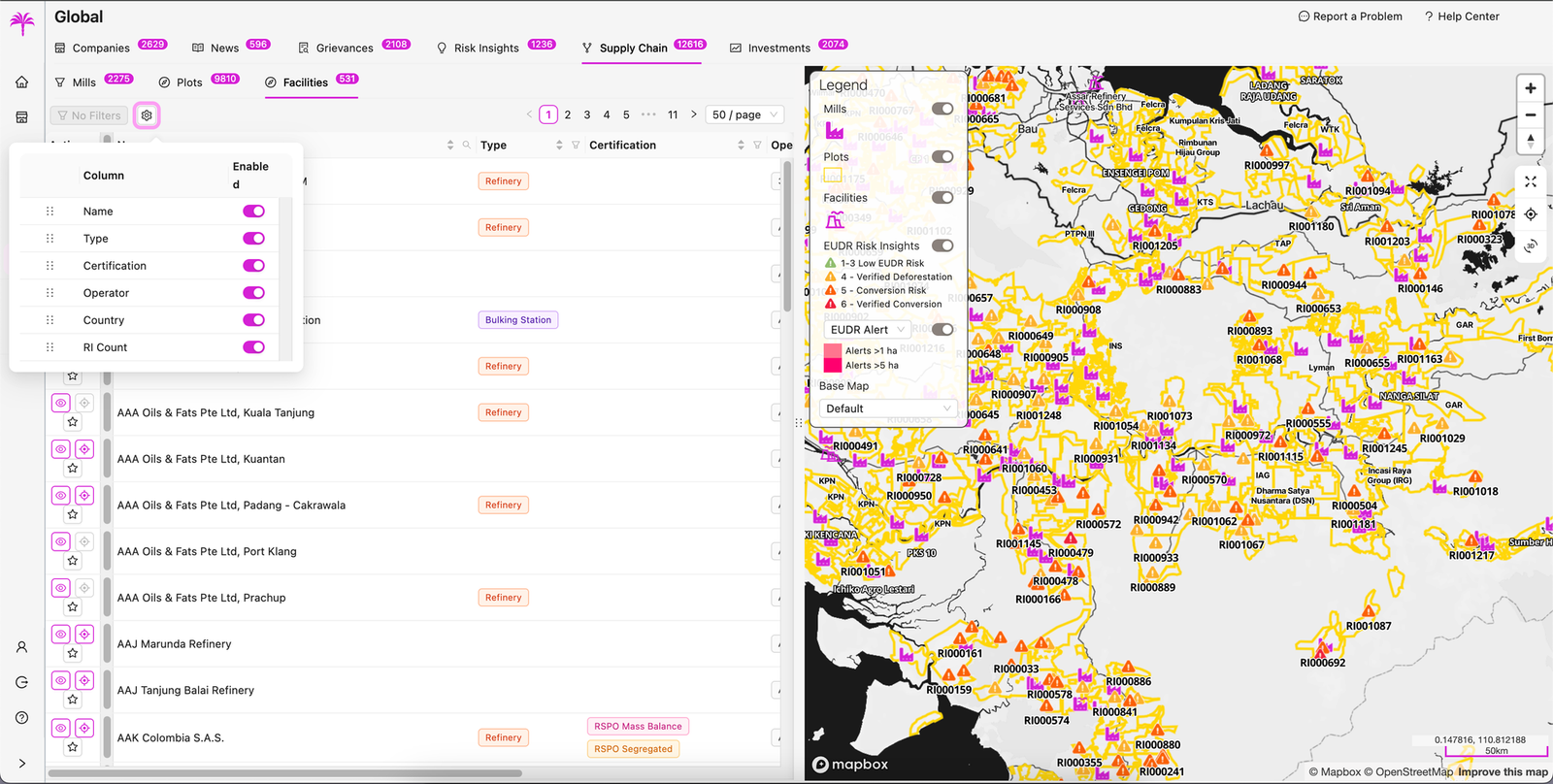Palmoil.io Newsletter - October 2024
Palmoil.io’s new VDF and NDPE Risk Dataset and updated risk rating system enhance deforestation-free sourcing and EUDR compliance. Recent showcases drew strong interest. Updated EUDR guidelines simplify DDS usage and adjust plot boundary rules, adding flexibility and new compliance needs.

Palmoil.io has launched a Verified Deforestation-Free (VDF) and NDPE Risk Dataset to help you track deforestation-free sourcing areas and updated our deforestation risk rating system to support EUDR compliance. New EUDR clarifications include simpler DDS usage for shipments, a stricter “deforestation-free” definition, and updated requirements for plot boundaries, which may ease data sourcing but add new compliance challenges.
What’s new?
VDF and NDPE Risk Data

We are excited to introduce the Verified Deforestation-Free (VDF) and No Deforestation, No Peat, No Exploitation (NDPE) Risk Dataset to Palmoil.io. This new dataset helps identify oil palm sourcing areas that meet VDF and NDPE policies, allowing subscribers to assess the percentage of their supply chain that is deforestation-free. Available within the Palmoil.io’s plots table and maps, it will also soon be included in our jurisdictional dashboards for enhanced supply chain monitoring.
EUDR Risk Ratings Update

We have updated the deforestation risk rating system for mills and plots on Palmoil.io. It now includes both automated alerts and export-reviewed verification, for the best balance of rapid-response and accuracy.
Each plot is now rated on a 0-6 scale:
0: without forest or that were fully planted before the cutoff
1: with forest that meets the EU definition,
2 and 3: for automated alerts in proximity to forest (using thresholds of 1 ha and 5 ha inside each hexagon in our maps)
4: verified as deforestation in a Risk Insight report
5: verified as deforestation with evidence in a Risk Insight report that it will likely be planted as oil palm
6: verified conversion to oil palm with satellite imagery evidence of planted trees in a Risk Insight report
What’s coming up?
Palmoil.io is at RT2024

In exciting news, our CEO and Founder, Leo Bottrill, and co-founder Kristofor Carle are attending the annual Roundtable Conference on Sustainable Palm Oil (RT2024) by RSPO in Bangkok, Thailand on 11-13 November 2024. This is a great opportunity to meet them in person, be sure to say hello!
Palmoil.io at SMARTSEED X

On October 30, 2024, GAR/SMART hosted the 10th SMARTSEED gathering at the Artotel Mangkuluhur Suites in Jakarta. Centered around the theme “Challenges and Opportunities in the Palm Oil Supply Chain Towards EUDR,” this event brought together suppliers, industry leaders, and stakeholders to explore paths toward sustainable palm oil production in compliance with the EUDR.
In Palmoil.io's booth attendees had a chance to see live demos and talk about EUDR while sharing all of their diverse perspectives on it. We also showcased Palmoil.io’s latest platform updates, including new datasets, enhanced map layers, and several advanced features. Attendees, including current subscribers and potential new clients, responded enthusiastically, with many expressing interest in trials and further exploration of the platform’s capabilities.
We were also given some time to present an overview of Palmoil.io, highlighting key features and the unique advantages we offer to our subscribers. Our Senior Data Analyst, Cholida Sofi talked about how Palmoil.io's tools and data can support stakeholders in meeting EUDR compliance requirements effectively. Attendees learned how these tools could streamline their compliance processes, making Palmoil.io an invaluable asset for navigating EUDR’s regulatory landscape.
Tip of the month

We're excited to announce the addition of the Verified Deforestation-Free (VDF) and No Deforestation, No Peat, No Exploitation (NDPE) Risk Datasets to Palmoil.io. We hope this will be useful for improving transparency in global supply chains, and help our subscribers make informed decisions.
You can easily filter these datasets in two ways:
- Navigate to the 'Supply Chain' table (available for both Mills and Plots) and scroll to the right. In the drop-down menu labeled 'Select a risk metric,' choose 'VDF / NDPE Risk.'
- Alternatively, you can select the VDF / NDPE map layer to visualize the data directly on the map.
Benefit of the month

We hope you’ve been making the most of our "Hide & Order Columns" customization feature across all tables—especially useful when filtering for EUDR risk, including Risk Insights and Supply Chain data. Be sure to tailor our tables to your specific needs to organize your workflow.
Understanding the EUDR
We’d like to highlight 3 important clarifications/changes from the latest EUDR FAQ:
#1 A Due Diligence Statement (DDS) can be used for multiple batches/shipments
This should make the process much easier for EU operators with frequent shipments from the same supply chain.
All of the requirements of the EUDR still have to be met. We would caution you to still review and update your verification on a regular basis. If the supply chain has changed, or if there is a possibility the plot has changed, meaning new areas have been planted and added to the supply chain.
#2 Deforestation-free = conversion
The definition of deforestation-free includes verifying absence of conversion to a relevant commodity. That means not just forest tree cover loss, not just conversion to agricultural use, but planting of the relevant commodity.
In Palmoil.io we track the increasing risk for EUDR from presence of forest that may meet the EU definition, to deforestation alerts, to expert verification of the alert and the forest status (the Risk Insight report) to verification of conversion using high-res imagery.
#3 Plot boundaries can be planted areas not permits
It must still be within a legal permit boundary, however the latest FAQ clarifies that the EU is not expecting the entire permit boundary to be submitted as part of the DDS, only the relevant land within.
This makes the task of souring plot boundaries much easier in some cases, especially when permit data is not readily available or local governments are restricting access.
However, this change leads to new challenges:
- Frequently changing boundaries - as new areas are planted the boundaries must be adjusted. It is the EU operator’s responsibility to account for this as part of your risk assessment.
- Segregation within a single permit area - within a single plantation there could be EU-compliant sourcing areas (included in your plots) and non-compliant sourcing areas (not included in your plots) Your responsibility here switches from Article 9 to Articles 10 and 11. Meaning you have to prove this scenario has a negligible risk, and have risk mitigation procedures in place. In practice, that will be challenging.

